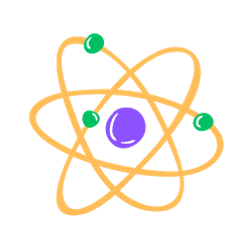Compiler vs Interpreter: A Deep Dive with Python and PyPy Installation Guide
 Saravanakumar R
Saravanakumar RWhen diving into programming languages, understanding the difference between compilers and interpreters is crucial. This blog will explain these concepts, particularly in the context of Python, and guide you through installing PyPy on your PC.
Compiler vs Interpreter
Compiler
A compiler translates the entire program from a high-level programming language into machine code (binary code) before execution. This process occurs in several stages:
Lexical Analysis: Converts the source code into tokens.
Syntax Analysis: Constructs a parse tree based on the grammar rules.
Semantic Analysis: Checks for semantic errors and generates an intermediate representation.
Optimization: Improves the intermediate code.
Code Generation: Produces the final machine code.
Advantages:
Faster execution after compilation.
Error detection before runtime.
Disadvantages:
Longer development time due to compilation.
Requires recompilation for every change.
Interpreter
An interpreter translates and executes the program line by line. It does not produce a separate executable file; instead, it runs directly from the source code. This process typically involves:
Lexical Analysis: Converts the source code into tokens.
Parsing: Analyzes the tokens to build an abstract syntax tree.
Execution: Executes the code based on the syntax tree.
Advantages:
Immediate execution and testing.
Easier to debug and test code line by line.
Disadvantages:
Slower execution compared to compiled languages.
Errors are detected during runtime.
Python: Compiler or Interpreter?
Python is traditionally known as an interpreted language. The standard implementation, CPython, compiles Python code into bytecode, which is then interpreted by the Python virtual machine. This approach combines features of both compilers and interpreters.
However, Python’s flexibility allows various implementations, such as PyPy, which uses Just-In-Time (JIT) compilation to enhance performance.
Installing PyPy on Windows
PyPy is an alternative Python interpreter that offers faster execution by using JIT compilation. Here’s how you can install PyPy on a Windows PC:
Step 1: Download PyPy
Go to the PyPy official website.
Download the latest version of PyPy for Windows. Choose the appropriate 32-bit or 64-bit version based on your system.
Step 2: Extract the Archive
Locate the downloaded
.zipfile.Right-click the file and select "Extract All..."
Choose a destination folder where you want to extract the files.
Step 3: Set Up Environment Variables
Open the Start menu and search for "Environment Variables."
Click on "Edit the system environment variables."
In the System Properties window, click on "Environment Variables."
In the Environment Variables window, find the "Path" variable in the "System variables" section and click "Edit."
Click "New" and add the path to the folder where you extracted PyPy (e.g.,
C:\path\to\pypy).Click "OK" to save and close all dialog boxes.
Step 4: Verify the Installation
Open Command Prompt (cmd).
Type
pypy --versionand press Enter.You should see the version of PyPy displayed, confirming that the installation was successful.
Conclusion
Understanding the difference between compilers and interpreters is fundamental to grasping how different programming languages work. PyPy offers a performance boost for Python through JIT compilation, making it a valuable tool for Python developers. By following the steps above, you can easily install PyPy on your PC and start experiencing its benefits.
Feel free to leave comments or questions below!
Subscribe to my newsletter
Read articles from Saravanakumar R directly inside your inbox. Subscribe to the newsletter, and don't miss out.
Written by

Saravanakumar R
Saravanakumar R
👋 Hey there! I am Saravanakumar, a proud Velammal Engineering College student pursuing a bachelor's degree in Electronics and Communication Engineering and building a solid foundation in technology. I am also an avid developer, enthusiastic volunteer, and public speaker, and I love exploring new opportunities and avenues.